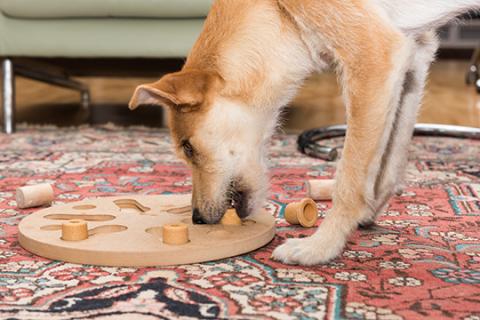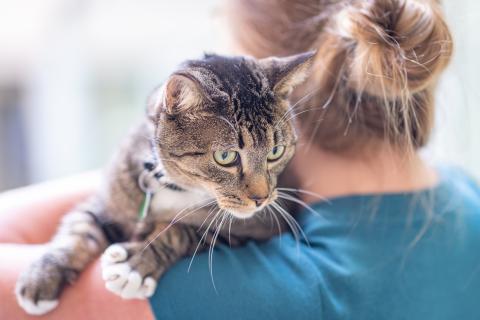
We love our feline friends and the joy they bring to our lives every day – and while they might have a funny way of showing it sometimes, we know they feel the same way about us.
Cats may not be as expressive as their canine counterparts but paying attention to their body language and vocalizations can tell you a lot about how your cat might be feeling.
For instance, your cat may show their love for you by rubbing up against you, giving slow blinks, or “making biscuits” while snuggling on the couch. A cat rubbing their chin or body against furniture, toys, or even people is a sign of marking their territory with their scent, and a cat may knead blankets, clothing, or other soft objects when they feel happy, comfortable, and safe.
Getting familiar with your cat’s communication can not only help strengthen your bond – it can also be a critical way to help you notice if they’re experiencing a medical emergency. Check out the list of body language tips below to get a better understanding of what your furry friend might be trying to tell you.
Note: Some body language in cats can mean several different emotions. When you’re looking for signs of what your cat is feeling, keep focused on the bigger picture of how they’re presenting instead of focusing on one thing, like pupil size or posture.
Happy
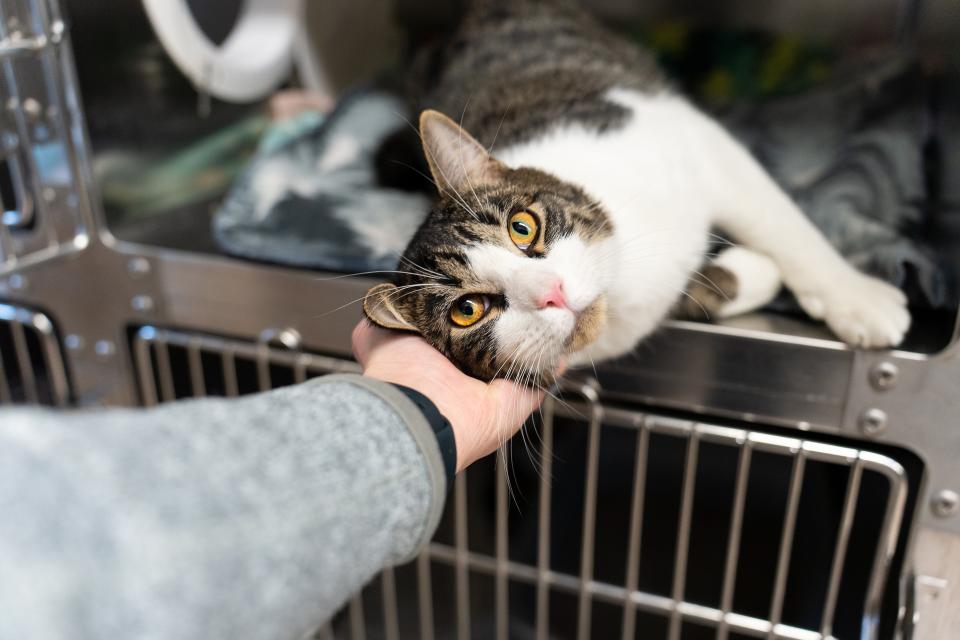
- Ears are forward.
- Their tail is neutral, down, and relaxed, or possibly wrapped loosely around their body.
- Cats may flop over on their side or put their belly up in a relaxed position. Careful – this doesn’t mean an invitation for belly rubs!
- A comfortable cat may give you slow blinks, purr, or bunt with their head.
Frightened or anxious
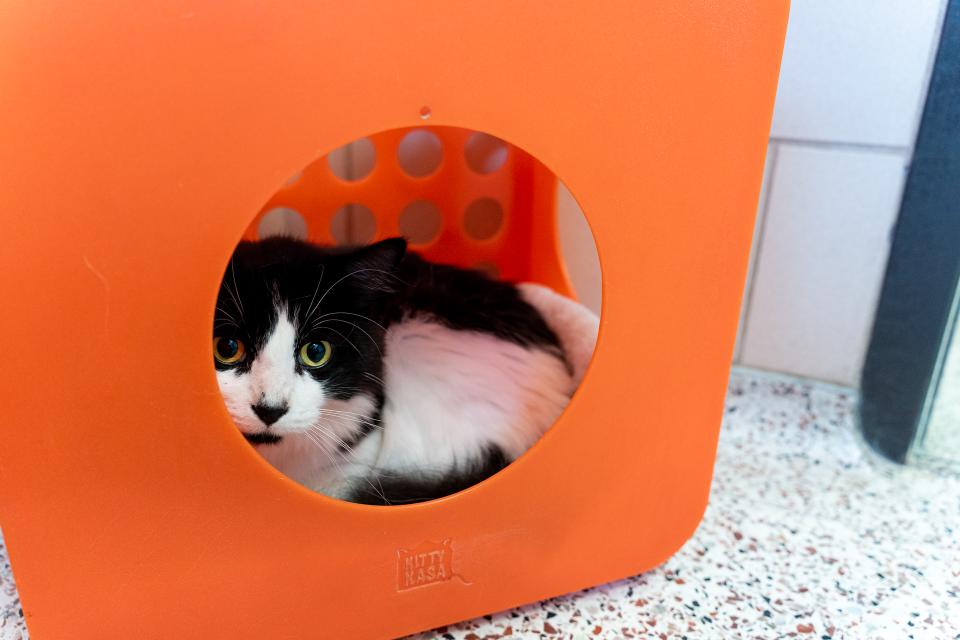
- Ears are low and turned sideways or back.
- Pupils are large and dilated.
- Whiskers will be facing backwards.
- Their tail will be curled tightly into themselves or lowered.
- An anxious cat may stand in a lower body position, with their head tucked in.
- A frightened cat may make little movement, or they may be fast and trying to get away with a low walking or running posture.
Defensive or angry
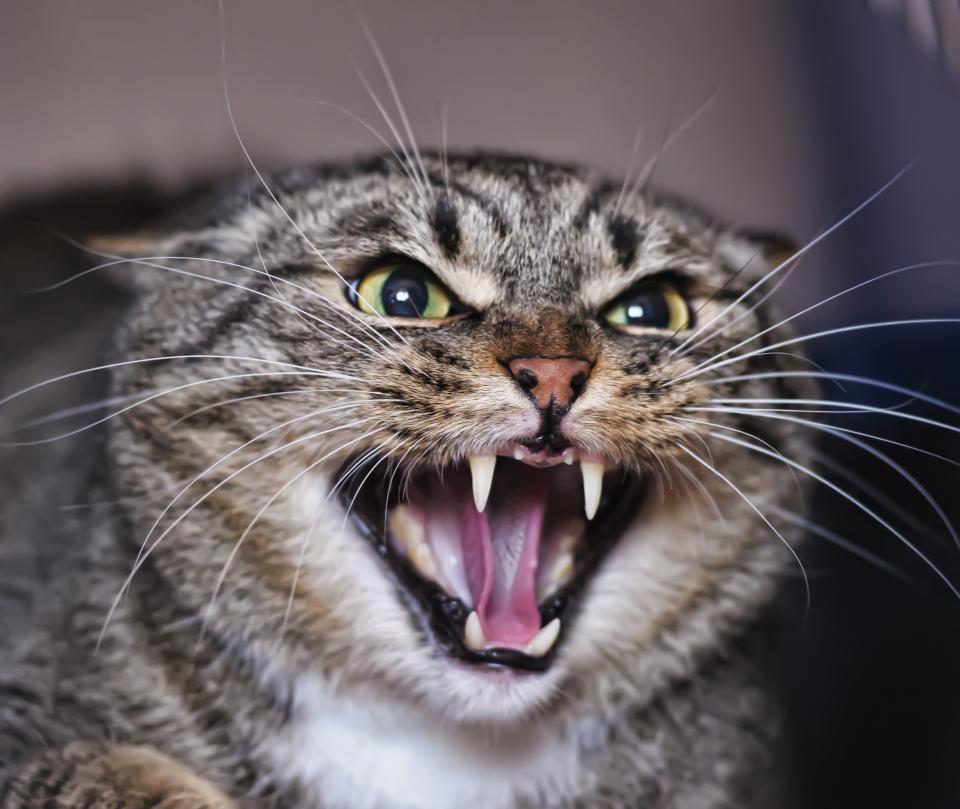
- Ears are tucked back and down.
- Constricted pupils can be a sign a cat is angry.
- A tail thrashing or flicking back and forth could signal anger.
- A cat’s hackles may be up, with their body in a stretched-up position (back is arched and head is down).
- Angry cats will make hissing or snarling vocalizations.
- Angry cats may also bat at you if you approach them.
In pain
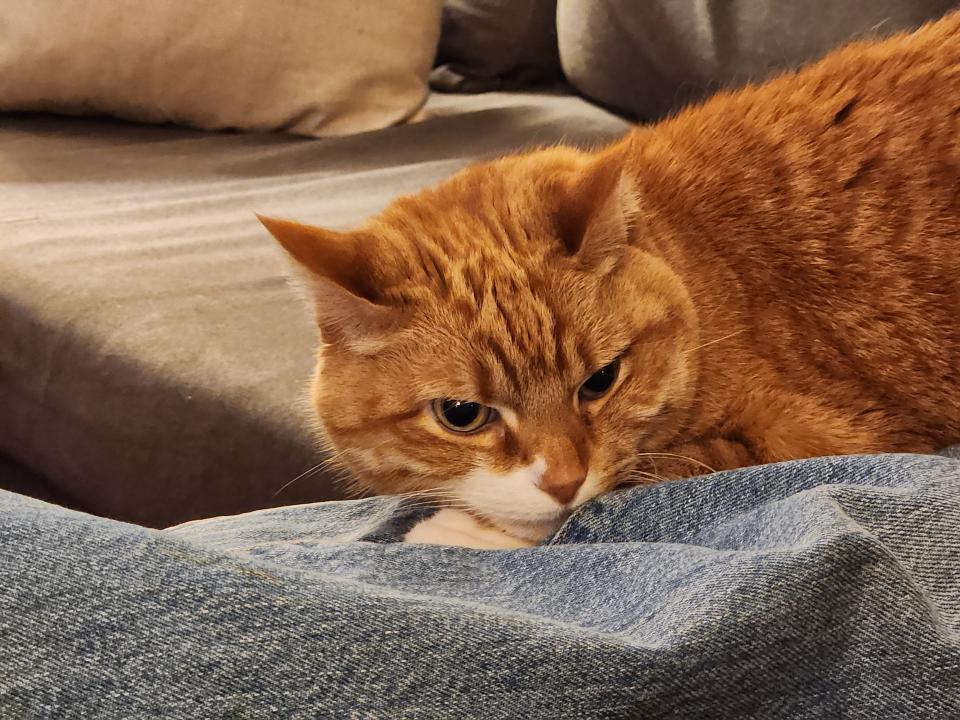
- Ears will likely be down.
- Cats will curl completely into themselves or sit in a sphinx pose, with their tail curled tightly around them.
- Cats in pain may avoid eye contact.
- Cats may be overall lethargic or make howling or shrieking vocalizations.
- Cats in pain may also be purring.
Playful
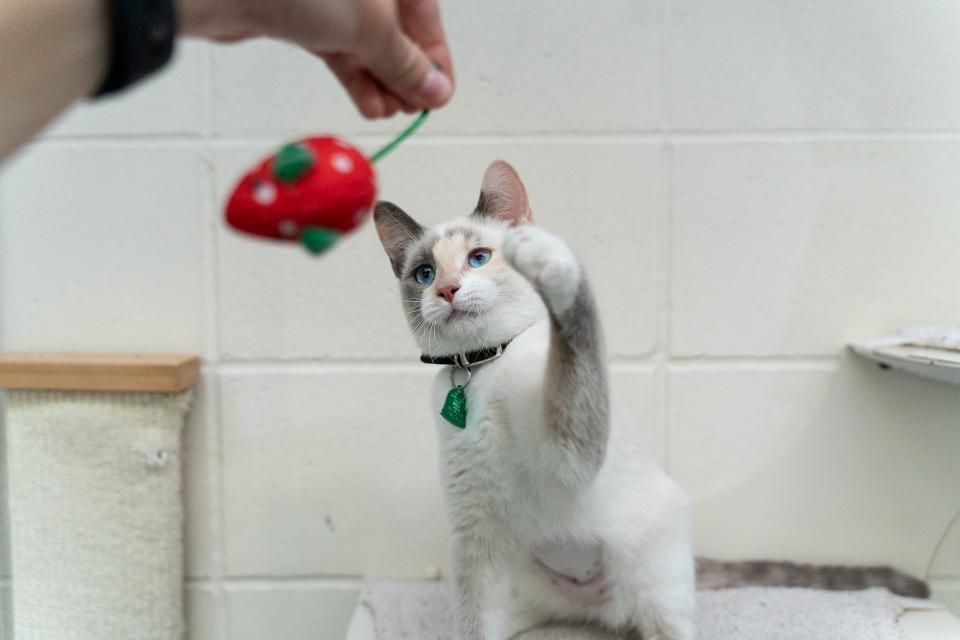
- Pupils may be dilated.
- Ears are forward and up.
- Playful cats may also make chatter vocalizations.
- Cats who are playing may crouch down into a “play bow” stance.
- A cat standing up on its back legs, batting or scratching at something, may also be a sign of play.
Want to learn more about cat behavior?
Animal Humane Society offers a variety of webinars and training options to bring out the best in your feline friend. For more tips and tricks, visit our Pet Behavior Library.
You can also call our Pet Helpline at 952-435-7738 for helpful advice from a trainer or behavior specialist.

